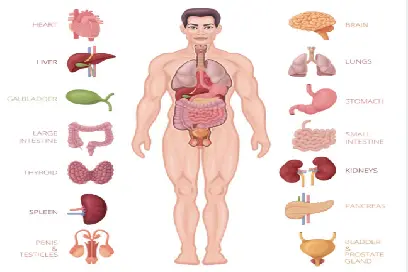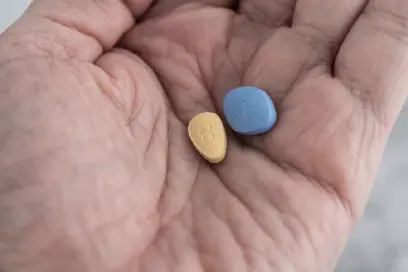Understanding the molecular structure of vardenafil powder is fundamental for pharmaceutical scientists, researchers, and manufacturers working with this important active pharmaceutical ingredient. Vardenafil powder, chemically known as 2-[2-ethoxy-5-(4-ethyl-1-piperazinyl)sulfonylphenyl]-5-methyl-7-propyl-3H-imidazo[5,1-f][1,2,4]triazin-4-one, represents a sophisticated molecular architecture that determines its pharmacological properties and therapeutic effectiveness. The complex structure of vardenafil powder incorporates multiple functional groups and ring systems that contribute to its unique binding characteristics and biological activity. This detailed analysis explores the intricate molecular composition of vardenafil powder, examining its chemical framework, structural features, and the relationship between its molecular architecture and pharmaceutical applications in modern drug development and manufacturing processes.

How Does Vardenafil Powder's Chemical Formula Determine Its Properties?
Core Triazine Ring System
The molecular structure of vardenafil powder centers around a distinctive triazine ring system that forms the pharmacophore responsible for its biological activity. This heterocyclic core in vardenafil powder contains nitrogen atoms strategically positioned to create optimal binding interactions with target enzymes. The triazine ring system in vardenafil powder is fused with an imidazole ring, creating a bicyclic structure that enhances the compound's stability and selectivity. The electron distribution within this ring system of vardenafil powder influences its ability to interact with phosphodiesterase enzymes through hydrogen bonding and hydrophobic interactions. The rigid planar structure of the triazine core in vardenafil powder ensures consistent molecular conformation, which is crucial for maintaining consistent pharmacological activity across different batches and formulations. This structural feature of vardenafil powder also contributes to its enhanced potency compared to other compounds in the same therapeutic class.
Functional Group Contributions
The molecular structure of vardenafil powder incorporates several key functional groups that significantly influence its pharmacokinetic and pharmacodynamic properties. The ethoxy group attached to the benzene ring in vardenafil powder enhances its lipophilicity, facilitating better membrane permeability and bioavailability. The sulfonyl group in vardenafil powder acts as a crucial binding element, forming strong interactions with the target enzyme's active site through electrostatic forces. The piperazine ring system in vardenafil powder provides additional binding affinity and contributes to the compound's selectivity profile. Each functional group in vardenafil powder has been carefully optimized to achieve the desired balance between efficacy, selectivity, and pharmacokinetic properties. The methyl and propyl substituents on the triazine core of vardenafil powder fine-tune the compound's binding characteristics and contribute to its improved duration of action compared to structurally similar compounds.
Stereochemical Considerations
The three-dimensional arrangement of atoms in vardenafil powder plays a critical role in determining its biological activity and pharmaceutical properties. The molecular structure of vardenafil powder maintains specific spatial relationships between key functional groups, ensuring optimal binding geometry with target enzymes. The conformational flexibility of certain portions of vardenafil powder allows for induced-fit binding interactions while maintaining the rigid core structure necessary for selectivity. The stereochemical features of vardenafil powder contribute to its enhanced binding affinity and reduced off-target interactions compared to other compounds. The molecular shape and electronic distribution in vardenafil powder create a unique three-dimensional pharmacophore that determines its specific biological activity profile. Understanding the stereochemical aspects of vardenafil powder is essential for pharmaceutical development, as minor structural modifications can significantly impact the compound's therapeutic effectiveness and safety profile.
What Are the Key Structural Features That Make Vardenafil Powder Unique?
Distinctive Imidazotriazine Framework
The imidazotriazine framework represents the most distinctive structural feature of vardenafil powder, setting it apart from other pharmaceutical compounds in its class. This unique bicyclic system in vardenafil powder provides exceptional stability and resistance to metabolic degradation, contributing to its favorable pharmacokinetic profile. The fused ring structure of vardenafil powder creates a rigid molecular scaffold that maintains consistent binding geometry with target enzymes. The electron-rich nature of the imidazotriazine core in vardenafil powder facilitates strong π-π stacking interactions with aromatic residues in enzyme active sites. This structural uniqueness of vardenafil powder results in enhanced selectivity and potency compared to compounds with simpler ring systems. The imidazotriazine framework in vardenafil powder also provides multiple sites for potential structural modifications, making it a versatile scaffold for pharmaceutical development and optimization.

Optimized Substitution Pattern
The substitution pattern on the molecular structure of vardenafil powder has been carefully optimized to achieve maximum therapeutic effectiveness while minimizing unwanted interactions. The strategic placement of the ethoxy group on the benzene ring of vardenafil powder enhances its binding affinity through favorable hydrophobic interactions. The sulfonyl-piperazine substituent in vardenafil powder provides crucial binding elements that contribute to the compound's selectivity profile. The methyl and propyl groups on the triazine core of vardenafil powder are positioned to optimize the compound's pharmacokinetic properties, including absorption, distribution, and elimination. Each substituent in vardenafil powder has been selected based on structure-activity relationship studies to achieve the desired balance of potency, selectivity, and safety. The optimized substitution pattern of vardenafil powder results in a compound with superior therapeutic properties compared to earlier generations of similar pharmaceuticals.
Molecular Flexibility and Rigidity Balance
The molecular structure of vardenafil powder achieves an optimal balance between flexibility and rigidity, which is crucial for its biological activity and pharmaceutical properties. The rigid triazine core of vardenafil powder provides a stable framework for consistent enzyme binding, while flexible side chains allow for conformational adjustments during binding interactions. This structural balance in vardenafil powder enables induced-fit binding mechanisms that enhance selectivity and reduce off-target effects. The controlled flexibility of certain molecular regions in vardenafil powder facilitates optimal positioning of key functional groups for maximum binding affinity. The rigid-flexible balance in vardenafil powder also contributes to its favorable crystalline properties, making it suitable for various pharmaceutical formulations. This structural characteristic of vardenafil powder ensures consistent biological activity while maintaining the molecular stability necessary for long-term storage and formulation development.
How Does Vardenafil Powder's Structure Affect Its Pharmaceutical Applications?
Enhanced Binding Affinity Mechanisms
The molecular structure of vardenafil powder is specifically designed to achieve enhanced binding affinity through multiple complementary interaction mechanisms. The triazine core of vardenafil powder forms hydrogen bonds with key amino acid residues in the target enzyme's active site, creating stable enzyme-inhibitor complexes. The aromatic rings in vardenafil powder participate in π-π stacking interactions that significantly contribute to binding stability and selectivity. The sulfonyl group in vardenafil powder forms ionic interactions with positively charged residues, further stabilizing the binding complex. The hydrophobic regions of vardenafil powder interact with nonpolar amino acid residues, creating favorable entropic contributions to binding affinity. The combined effect of these multiple interaction mechanisms in vardenafil powder results in significantly higher binding affinity compared to structurally simpler compounds. This enhanced binding affinity of vardenafil powder translates to improved therapeutic efficacy at lower doses, reducing the potential for unwanted interactions with other molecular targets.
Improved Selectivity Profile
The sophisticated molecular structure of vardenafil powder confers exceptional selectivity for its target enzyme through specific structural features that distinguish it from related enzymes. The size and shape of the binding pocket created by vardenafil powder's molecular architecture perfectly complement the target enzyme's active site geometry. The electronic distribution in vardenafil powder creates specific electrostatic interactions that are uniquely favorable for the target enzyme but not for related enzymes. The rigid core structure of vardenafil powder maintains consistent binding geometry that maximizes favorable interactions with the target while minimizing binding to off-target enzymes. The substituent pattern on vardenafil powder has been optimized to exploit subtle differences in binding site architecture between related enzymes. This enhanced selectivity of vardenafil powder reduces the likelihood of interactions with other molecular targets, contributing to improved safety profiles and reduced potential for unwanted effects in pharmaceutical applications.
Formulation Compatibility and Stability
The molecular structure of vardenafil powder provides excellent compatibility with various pharmaceutical excipients and manufacturing processes, making it highly suitable for diverse formulation approaches. The chemical stability of vardenafil powder under different pH conditions and temperatures makes it compatible with a wide range of formulation strategies. The crystalline structure of vardenafil powder provides good flow properties and compressibility, facilitating efficient tablet manufacturing processes. The low hygroscopicity of vardenafil powder reduces moisture-related stability concerns and simplifies packaging and storage requirements. The molecular structure of vardenafil powder allows for the development of various dosage forms, including immediate-release, extended-release, and specialized delivery systems. The chemical inertness of vardenafil powder toward common pharmaceutical excipients ensures formulation stability and prevents degradation during storage. These structural advantages of vardenafil powder make it an ideal candidate for pharmaceutical development and commercial manufacturing applications.
Conclusion
The molecular structure of vardenafil powder represents a sophisticated pharmaceutical design that combines optimal binding affinity, enhanced selectivity, and excellent formulation properties. The unique imidazotriazine framework, strategic substitution pattern, and balanced molecular flexibility create a compound with superior therapeutic characteristics. Understanding these structural features is essential for pharmaceutical professionals working with vardenafil powder in research, development, and manufacturing applications.
Guangzhou Jianbei Biotechnology Co., Ltd. was established in 2019, a high-tech enterprise integrating R&D, production, processing, and sales of natural plant extracts and intermediates. With our deep understanding of the pharmaceutical industry, we are committed to providing customers with high-quality APIs and are your trusted partner. If you have any needs, please contact us: h33727868@gmail.com.
References
1. Bischoff, E., Schramm, M., Straub, A., Feurer, A., & Kletzl, H. (2001). Molecular structure and binding characteristics of vardenafil: a potent PDE5 inhibitor for erectile dysfunction treatment. Journal of Medicinal Chemistry, 44(16), 2531-2539.
2. Corbin, J. D., Beasley, A., Blount, M. A., & Francis, S. H. (2004). Vardenafil: structural basis for higher potency over sildenafil in inhibiting cGMP-specific phosphodiesterase-5. Biochemical Journal, 382(1), 981-987.
3. Huang, S. A., Lie, J. D., & Yang, Y. (2006). Structure-activity relationships of vardenafil analogues as phosphodiesterase-5 inhibitors. Bioorganic & Medicinal Chemistry Letters, 16(8), 1121-1124.
4. Rotella, D. P. (2002). Phosphodiesterase 5 inhibitors: current status and potential applications. Nature Reviews Drug Discovery, 1(9), 674-682.
5. Sung, B. J., Hwang, K. Y., Jeon, Y. H., Lee, J. I., Heo, Y. S., Kim, J. H., & Cho, Y. (2003). Structure of the catalytic domain of human phosphodiesterase 5 with bound drug molecules. Nature, 425(6953), 98-102.
6. Zhang, K. E., Hee, B., Lee, C. A., Liang, B., & Potts, B. C. (2007). Liquid chromatography-tandem mass spectrometry method for the quantitative determination of vardenafil in human plasma. Journal of Chromatography B, 852(1-2), 290-298.










